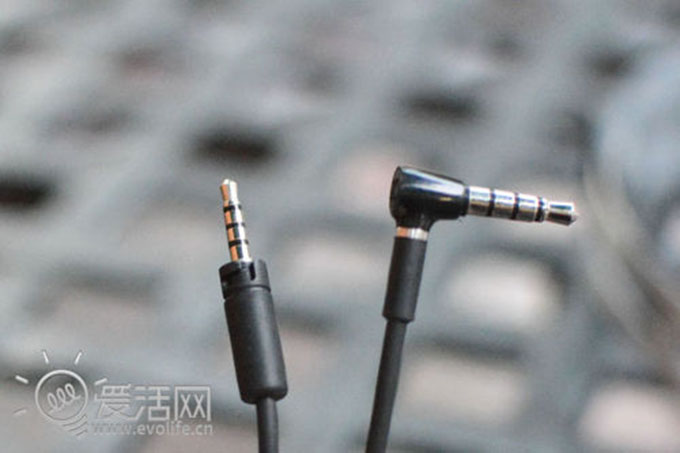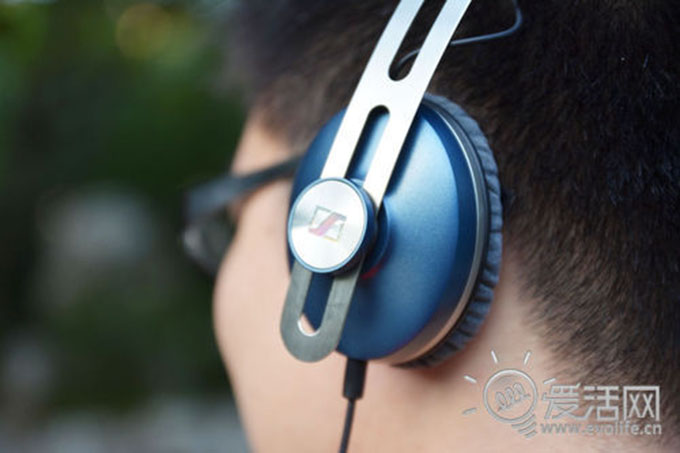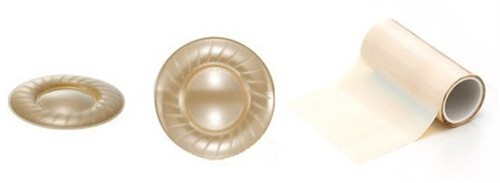At the end of 2012, JVC released the FXZ100, a three-unit dynamic in-ear earphone with "Live Beat" technology. It is obviously more difficult to lower the three moving-coil speakers in the in-ear headphones. If you still have the impression that you will remember JVC's "micro-motion" technology, we have also evaluated one such product. Of course, the FXZ100 uses a similar technology speaker, which uses two 5.8mm diameter micro-motions. The circle unit is used to be responsible for the medium and high frequency, and the rear side uses a special structure to lead out a 8.8 mm subwoofer unit. The overall technical highlights are quite large. The price of this headset is priced at RMB 1999, while the online shopping price is between RMB 900 and RMB 1,000. about.

The JVC FXZ100 earphone adopts a three-unit moving coil structure. Compared with the multi-unit moving iron earphone, the multi-unit dynamic ring earphone is relatively rare. It can also be seen from the FXZ100 that even if the micro-moving ring unit is used, its volume is larger than that. Multi-unit moving iron is a bit bigger, but from the point of view of wearing, it is not too big a problem, wearing comfort is better, 11 grams of weight is not heavier than the GR07 headphones. These are not the focus, we are more concerned What are the functions of these three dynamic speakers in the headphones, and then we will further analyze the information about the FXZ100 headphones provided by JVC.

We translated an official exploded view from the FXZ100 headset. The most striking is the two 5.8mm speaker units side by side in the front of the headset. The two micro-motion units are placed in a metal housing. In front of it, the front of the earphone is the catheter in the ear part. The two 5.8mm micro-motion unit is responsible for the middle and high frequency of the earphone [still much larger than the moving iron unit], and the official does not specify whether the two speakers are in the performance band. There is a division of labor, it should be a side-by-side relationship. However, the diaphragms of the two speakers are different. The upper unit in the figure uses a nano-coated carbon diaphragm, while the lower speaker unit has no nano-coating. But the same is the carbon diaphragm.

The entire volume of the FXZ100 earphone is almost half of the woofer part, but the structure seems to make the FXZ100 look more different and more technical. The official information of the FXZ100 is called the Stream Woofer. It uses an 8.8mm speaker unit, but its structure is quite special. As shown in the figure, its speaker opening is placed 90 degrees to the ear portion of the earphone [telephone pointing direction], and the speaker outer cover has a pure The aluminum casing [specifically pointed direction and structure is unclear], the pure aluminum casing has a very small diameter opening to lead out a very small conduit [Stream Duct], used to draw low frequencies.

In the Stream Woofer unit, the official said that the Kelton structure of the bass design is used. In the subwoofer product, we can see the Kelton Subwoofer product. Simply put, the Kelton structure refers to a passive diaphragm directly driven by an active speaker. [Double-sided diaphragm] subwoofer design, Kelton-type subwoofer design is undoubtedly to increase the sense of low-frequency, and directly use the active basin to drive the passive basin in theory, it seems that the response will be faster than the phase-inversion. Although the bass part of the FXZ100 is designed in this way, it cannot be distinguished in the structure diagram. However, since the Stream Woofer uses the name "Woofer", it should be clear about its intention. The FXZ100 is designed to provide a stronger bass feel. Its conduit Can the design [Stream Duct] bring enough good performance?
This FXZ100 is provided by netizens and has been used for a long time, but we still took the headset for more than 150 hours. From the simple audition, we used iPod Classic, vivo Xplay, iPhone 5, etc. For reference, Colorful C4 Pro, Monitor 03 US, Fantasia D/A as the main evaluation platform. Contrast earplugs include Sound E10, Vsonic GR07 MKII, VSD1S, etc. FXZ100 is not a particularly easy to drive earplugs on the iPhone The low frequency of Xplay is obviously difficult to control. Our evaluation below is mainly based on the colorful C4 Pro, and the differences of other sources will be explained separately below.



The FXZ100 uses two JVC carbon diaphragms with a 5.8mm micro-motion coil. We don't know what the micro-motion unit has to do with the units in our previously tested FXC51, but it doesn't matter from the overall listening. More common points. FXC51's fretting ring carbon diaphragm unit left us with a good resolution, high-frequency sharp and bright impression, but the high-frequency pull is too high, the sound is obviously too bright. And the high-frequency resolution of FXZ100 Not good enough, even if compared with E10, it is obviously worse. In the middle and high frequency part, even the resolution is weaker than Vsonic VSD1S. Its high frequency style is soft, the transient response is more general, and it is dynamic under C4 Pro. The middle and high frequency levels will be worse and have a sense of dryness. On the iPhone and other mobile phone sources, this problem is more obvious. On the integrated sound card of 03 US, Fantasia D/A and even Macbook Pro, the high frequency dynamics will be improved. The big dynamics are much better control. The high frequency of FXZ100 is far from the performance of the micro-motion circle on FXC51.

The connection between the IFZ100's IF and the mid-high frequency is somewhat out of line. This problem is more like the FXC51.FXZ's dynamic lack of high-frequency part in the mid-range bias. It appears to be weak in the performance of female voices, the sound is relatively dry, and there is no tension in the young female voice. Female voices appear to have obvious collapse of human voice. The overall sense of hearing is similar to that of FXC51. It lacks the resolution of FXC51 and the density and resolution of the high-frequency upper part. In the performance of male voice, FXZ100 is relatively good at it. The sound is softer and fuller, and the resolution of the vocal midrange and the low range is slightly better than the mid-high frequency part.
Compared with the Somic E10, the IFZ100's IF dynamic performance is general, the mid-high frequency part even collapses obviously, and the vocal performance is weaker than the E10. Compared with the VSD1S, the FXZ100's resolution is slightly lower than the VSD1S. Good, but the intermediate frequency, mid-high frequency part of the resolution is equivalent to VSD1S, the mid-high frequency sound collapses without VSD1S full, and the dynamics are obviously weaker. Compared with GR07 MKII, the resolution is much backward, although the mid-low frequency part is thick and soft. But the resolution gap is also very large.
The low frequency of the FXZ100 is probably the most important goal of this headset design. We can even understand it: the three-unit design is not to provide a good intermediate frequency and high frequency, but to ensure the intermediate frequency in the low frequency of the Stream Woofer structure. And the high-frequency performance is not so ugly as possible - at least the current sense of hearing can fully support our idea. FXZ100's low frequency uses a special structure, and it is really amazing in terms of volume, but with the sound source of iPhone, Xplay The low-frequency quality is poor, and its style is somewhat squeezed to the mid-low frequency part, so it also makes some normal intermediate frequencies become somewhat turbid. On C4 Pro or 03 US, Fantasia D/A, etc. The low frequency dynamics will be significantly improved, and the overall momentum will follow.
FXZ100's low-frequency dive is deeper. Compared with GR07 MKII and VSD1S, the advantage is relatively obvious. In the low-frequency part of the dive, the FXZ100 is better than the three headphones that are compared today. The FXZ100's low frequency is though The ducted structure and the Kelton structure are used, but the overall transient response is still very slow, which causes its low frequency to have a large interference to the intermediate frequency level in the middle and low frequency parts. The sound is a bit muddy. Of course, in the case of particularly large dynamics, its low frequency is amazing, the depth of the dive is also prominent in the earplugs, but the overall resolution is not good, and the slow transient response also makes it The low frequency sounds not wide enough. If the low frequency of the VSD1S is somewhat tight, then the FXZ100 is relatively soft, but turbid; while the low frequency of the E10 is especially open and solid in the middle and low frequency parts. Of course, the low frequency sense of the GR07 MKII is completely incompatible with Compared to the FXZ100, the resolving power advantage is enormous.
When testing earplugs, we usually use a good-quality mobile phone or iPod as a test platform, and FXZ100 makes us an exception. The FXZ100 has a lot of low-frequency, low-frequency and low-frequency, but in portable audio sources such as iPod Classic and iPhone, it is in the middle. The performance of the low frequency obviously interferes with the level of the whole sound, and the advantage of the deeper part of the low frequency dive is also very difficult to express [the difference in resolution at this time]. Only when we use a better sound source than the C4 Pro, the overall dynamics of the FXZ100 There is an improvement, and the resolving power, dynamics and dive advantages of this heavy taste can also be more obvious.
Perhaps, the JVC HA-FXZ100 is an earphone designed specifically for the sound style of "subwoofer". In the configuration of three dynamic speakers, the "subwoofer" design of the low frequency part is its main design goal, if from this In terms of the in-ear earphones, the FXZ100's low-frequency sense and low-frequency dive depth do have certain characteristics. We have previously evaluated JVC's 5.8mm micro-coil carbon diaphragm unit FXC51, which is in the middle and high frequency parts. The performance left us a good impression, but unfortunately, under the two carbon diaphragm speakers equipped with the FXZ100, we did not hear any excellent performance of the FXZ100 at medium and high frequencies, if it is related to E10 and VSD1S. Compared with FXZ100, the performance of IFZ100 is obviously worse than that of IFZ100. The overall sense of FXZ100 is also more low-frequency, the sound style is softer, the overall transient is worse due to the strong low frequency, and the IF part lacks tension and resolution. Power difference, high-frequency resolution is also slightly weak. In general, you can think that this is a "subwoofer" in the earplugs, the overall quality is still significantly worse. There is nothing in the high-end multi-unit moving iron headphones
Myled Electronics Technology Co., Ltd. , http://www.my-ledlight.com